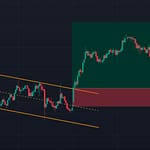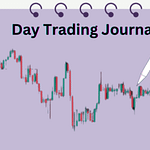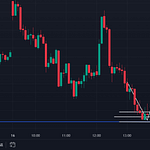When we talk about the 90 90 90 trading rule, we’re referring to a common observation in the trading world that highlights the challenges many new traders face when starting their trading journey. Here’s what it means:
Table of Contents
ToggleWhat is the 90 90 90 Trading Rule in Options Trading?
90% of Traders:
This part of the rule suggests that a vast majority—specifically, 90%—of people who try their hand at trading lose money. It’s a high number, but it reflects the difficulty of being consistently successful in trading.
Lose 90% of Their Capital:
The rule also points out that those who do lose money in trading often lose a substantial portion—again, about 90%—of the money they invest or trade with. This loss can happen relatively quickly, especially in the first few months of trading.
Within the First 90 Days:
The final part of the rule indicates that these losses typically occur within the initial 90 days of starting to trade. This short timeframe highlights the steep learning curve and volatility of the markets.
Emphasizing Common Challenges and Pitfalls
The 90 90 90 trading rule isn’t meant to discourage aspiring traders but rather to underline the importance of understanding the risks and complexities involved in trading:
High Failure Rate:
It shows that trading is challenging, and success doesn’t come easily. Many factors contribute to this, such as market unpredictability, emotional decision-making, and lack of experience.
Risk Awareness:
By acknowledging this rule, traders can become more aware of the risks involved, take steps to educate themselves and approach trading cautiously.
Learning Opportunity:
Instead of seeing it as a deterrent, traders can use this rule as motivation to learn and develop the necessary skills to navigate the markets successfully.
The 90 90 90 trading rule serves as a reminder of the realities of trading and underscores the importance of proper education, risk management, and perseverance for those looking to succeed in the world of trading.
The Reality of Day Trading
Day trading, or actively buying and selling financial instruments within the same trading day, can be enticing due to the potential for quick profits.
However, it’s important to understand the realities and challenges associated with day trading.
High Failure Rate Among New Traders
Day trading is notorious for its high failure rate, especially among newcomers. Here’s why:
Lack of Experience and Market Understanding
Many new traders jump into day trading without a solid understanding of market dynamics, technical analysis, or fundamental factors that influence asset prices. This lack of knowledge can lead to poor decision-making.
Risks and Volatility
Day trading involves rapid buying and selling of assets, which can expose traders to significant risks and market volatility
Market Volatility
Prices of stocks, currencies, or commodities can fluctuate wildly within a single trading session. Sudden market movements can catch inexperienced traders off guard and lead to losses.
Emotional Decision-Making
Emotions can cloud judgment and lead to impulsive decisions. These decisions mostly go against the traders and resultant trades lose their money in options trading.
Fear and Greed
Fear of missing out (FOMO) on potential gains or the fear of losing money can cause traders to enter or exit trades at the wrong times. Similarly, greed can lead traders to hold onto losing positions in the hope that they’ll turn profitable.
Overleveraging and Poor Risk Management Practices
Overleveraging occurs when traders use borrowed funds (margin) to amplify their trading positions
Risk Management
Effective risk management is crucial in day trading to protect capital and minimize losses. Traders who overleverage their positions or fail to set stop-loss orders risk losing a significant portion of their capital on a single trade.
Day trading offers potential rewards but comes with substantial risks. New traders often face challenges due to lack of experience, emotional decision-making, and poor risk management practices. Understanding these factors is essential for aspiring day traders to increase their chances of success in this demanding and competitive field.
What are the Learnings from the 90 90 90 Trading Rule?
The 90 90 90 trading rule sheds light on the challenges faced by traders, but it also serves as a valuable lesson for those entering the world of trading. Here’s how you can learn from this rule and improve your trading journey:
Importance of Realistic Expectations and Risk Management
Realistic Expectations:
Understand that trading is not a get-rich-quick scheme. Set achievable goals and be prepared for both wins and losses.
Risk Management:
Focus on preserving your capital by managing risk effectively. This involves determining how much you’re willing to risk on each trade and setting stop-loss orders to limit potential losses.
Emphasize the Need for Education, Practice, and Patience
Education:
Invest time in learning about the markets, trading strategies, and risk management techniques. Take advantage of online resources, courses, and books to build a strong foundation.
Practice:
Start by trading on a demo account with virtual money. This allows you to practice executing trades and testing strategies without risking real capital.
Patience:
Trading success doesn’t happen overnight. Be patient and give yourself time to develop skills and gain experience.
Strategies to Avoid Being Part of the 90%
To increase your chances of success and avoid falling into the statistic of the 90 90 90 trading rule, consider the following strategies:
Educate Oneself Thoroughly:
Before trading with real money, ensure you have a solid understanding of market fundamentals, technical analysis, and risk management.
Start with a Demo Account:
Practice trading in a simulated environment to gain experience and test your strategies without risking your capital.
Develop a Well-Defined Trading Plan:
Create a clear trading plan outlining your entry and exit criteria, risk tolerance, and position sizing. Stick to your plan to avoid impulsive decisions.
Key Principles for New Traders
Focus on Capital Preservation:
Aim to protect your trading capital above all else. Avoid taking unnecessary risks that could jeopardize your account.
Manage Emotions:
Keep emotions like fear and greed in check. Stick to your trading plan and avoid making decisions based on impulses.
Implement Strict Risk Management Rules:
Use stop-loss orders and position-sizing strategies to manage risk and limit potential losses.
Building Skills and Experience
Continuous Learning:
Stay updated with market trends and strategies by reading books, taking courses, and seeking mentorship from experienced traders.
Gradual Transition to Live Trading:
Once you feel confident with your demo trading results, start trading with small amounts of real capital. Gradually increase your position sizes as you gain experience.
Tracking Progress and Adjustments
Keep a Trading Journal:
Record your trades in the trading journal, including entry and exit points, reasons for trade decisions, and outcomes. Review your journal regularly to identify patterns and areas for improvement.
Adjust Trading Strategies:
Based on your trading journal analysis, make necessary adjustments to your strategies and risk management techniques to optimize your performance.
In conclusion, understanding and respecting the 90 90 90 trading rule is essential for aspiring traders. By setting realistic expectations, focusing on education and risk management, and implementing disciplined trading practices, you can improve your chances of success in the trading world.
Remember, dedication, perseverance, and continuous improvement are key to achieving consistent profitability in trading.







